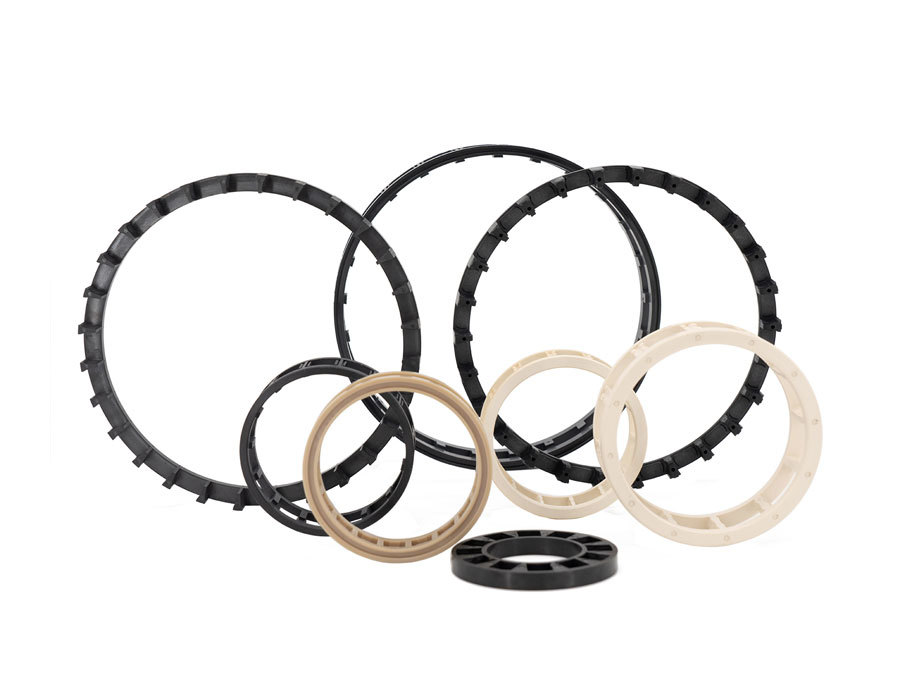-
-
Precision bearings
-
Angular contact ball bearings
-
Crossed roller bearings
-
Tapered roller bearings
-
Slewing bearings
-
Ball screw support bearings
-
Rotary table bearings
-
Thin-wall bearings
-
-
Bearing related
-
Bearing parts
-
Spindle
-
Bearing testing machine
-
Bearing measuring instrument
-
Bearing processing equipment
-
-
Introduction to bearing cage materials
Published on:
2025-11-21 11:05
Introduction to bearing cage materials
The cage is mainly used to keep the rolling elements separated to prevent direct contact between adjacent rolling elements and to keep the friction and heat generation of the bearing at a minimum. In separable bearings, it can also be used to prevent rolling elements from falling off. In some bearings, such as needle roller bearings or thrust cylindrical roller bearings, it can also be used to guide the rolling elements. In grease-lubricated bearings, the cage can also serve to store grease, thereby improving bearing lubrication. The mechanical stress on the cage of a rolling bearing comes from friction, strain and inertia. In addition, it is also affected by chemical reactions of certain lubricants, lubricating additives and their aging products, organic solvents, coolants, etc. Therefore, the design and selection of cage materials are crucial to cage performance and bearing operational reliability.

【Brass Cage】
Stamped brass cages are only used for small and medium-sized bearings. Most brass cages are machined from castings or forgings. Brass cages should not be used at temperatures above 300°C. They are unaffected by most common lubricants, including synthetic oils and greases. They can be cleaned with general organic solvents, but dilute alkaline solutions should not be used.
【Nylon Cage】
Cages for certain types of small or medium-sized bearings, such as double-row deep groove ball bearings, self-aligning ball bearings, angular contact ball bearings, spherical roller bearings, and cylindrical roller bearings, are molded from heat-stabilized glass fiber reinforced nylon 66 material, which has good strength and elasticity.
Because nylon exhibits excellent slip properties on lubricated steel surfaces, and the contact surfaces between the cage and rolling elements are smoothly machined, friction generated by the cage is greatly reduced. Therefore, bearing heat generation and friction can be kept to a minimum. The injection molding process for manufacturing the cage can meet specific design requirements.
Nylon cages allow bearings to maintain good performance even under lubrication-deficient conditions, enabling them to operate continuously for a considerable period without rapid seizure or further damage. When using bearings with nylon cages, attention must be paid to the operating temperature of the nylon material and its resistance to lubricant corrosion.
The longer the cage is subjected to overheating, the faster the aging process. The operating temperature of nylon cages is allowed to be briefly higher than the recommended operating temperature, but should not exceed the recommended operating temperature by more than 20°C. The brief overheating should be spread over a longer period of low operating temperature, and attention should be paid to whether the lubricant can withstand the brief overheating. If the operating temperature is consistently above 120°C, bearings with metal cages must be used. Nylon cages are also not suitable for temperatures below -40°C, as nylon will lose its elasticity below this temperature.
If you're looking to source reliable bearing cages manufacturers, we'd be happy to discuss your requirements and show you how our products can contribute to your bearing assemblies' long-term success. Feel free to reach out to our technical team – we're here to help you find the right solution.
Email: info@zys.com.cn
Website: www.precision-bearing.com
Previous one
Previous one
Latest News
Share your needs with us and get an impressive collaboration and reassuring product.
Headquarter: East Wing Building, No. 121 Wutong Street, High-Tech Industrial Development Zone, Zhengzhou City, Henan Province, China
No. 1 Factory Address: No. 6 Fenghua Road, Luoyang City, Henan Province, China
No. 2 Factory Address: No. 1 Sanxi Road, Science and Technology Industrial Park, Jianxi District, Luoyang City, Henan Province, China
No. 3 Factory Address: Yibin Industrial Technology Park, Yibin District, Luoyang City, Henan Province, China
COOKIES
Our website uses cookies and similar technologies to personalize the advertising shown to you and to help you get the best experience on our website. For more information, see our Privacy & Cookie Policy
COOKIES
Our website uses cookies and similar technologies to personalize the advertising shown to you and to help you get the best experience on our website. For more information, see our Privacy & Cookie Policy
These cookies are necessary for basic functions such as payment. Standard cookies cannot be turned off and do not store any of your information.
These cookies collect information, such as how many people are using our site or which pages are popular, to help us improve the customer experience. Turning these cookies off will mean we can't collect information to improve your experience.
These cookies enable the website to provide enhanced functionality and personalization. They may be set by us or by third-party providers whose services we have added to our pages. If you do not allow these cookies, some or all of these services may not function properly.
These cookies help us understand what you are interested in so that we can show you relevant advertising on other websites. Turning these cookies off will mean we are unable to show you any personalized advertising.




